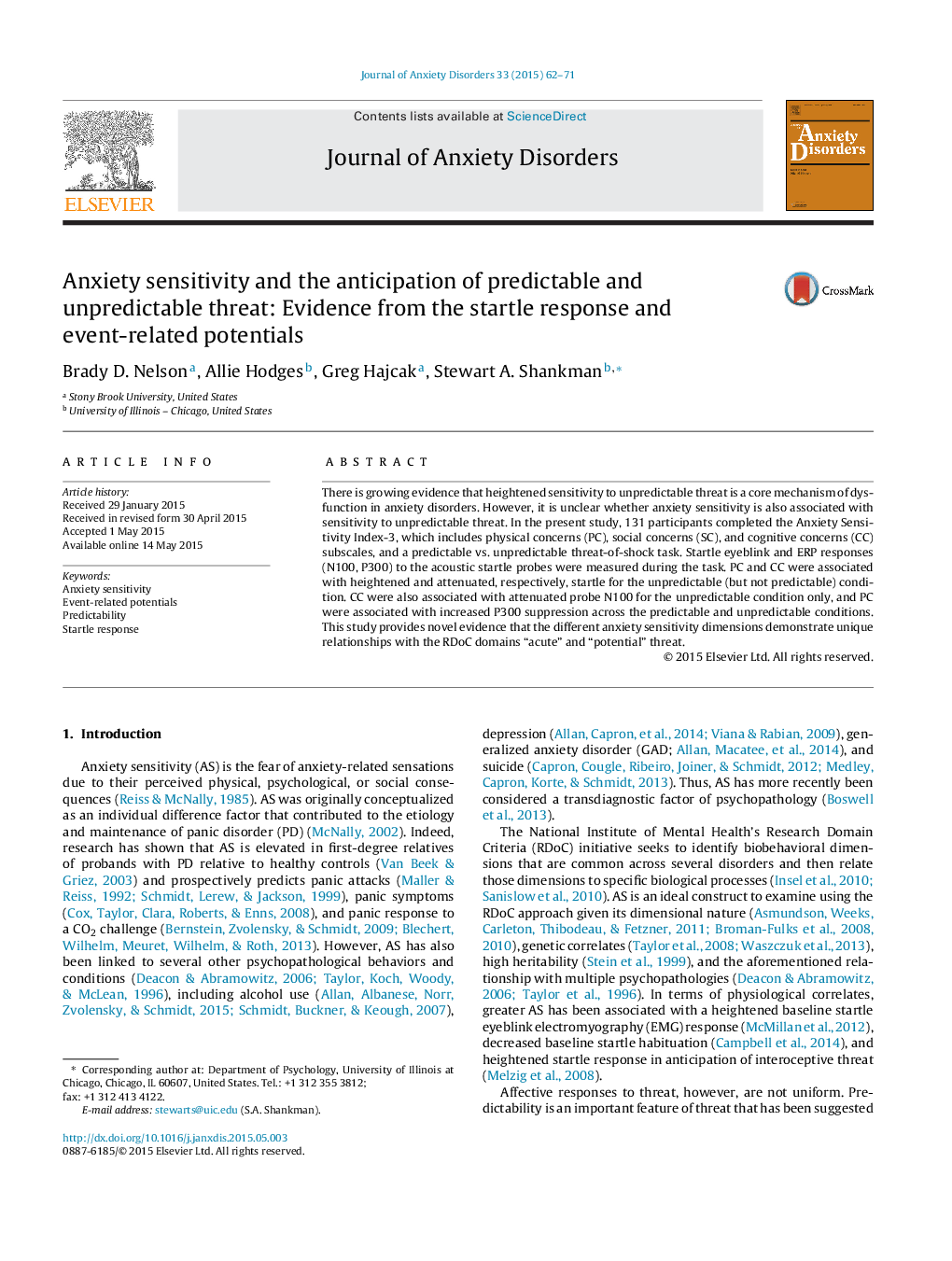| Article ID | Journal | Published Year | Pages | File Type |
|---|---|---|---|---|
| 909274 | Journal of Anxiety Disorders | 2015 | 10 Pages |
•Examined anxiety sensitivity and anticipatory threat responding.•Physical concerns associated with increased startle to unpredictable threat.•Cognitive concerns associated with decreased startle to unpredictable threat.•Anxiety sensitivity subscales also associated with ERPs during threat conditions.•Anxiety sensitivity dimensions uniquely related to acute and potential threat.
There is growing evidence that heightened sensitivity to unpredictable threat is a core mechanism of dysfunction in anxiety disorders. However, it is unclear whether anxiety sensitivity is also associated with sensitivity to unpredictable threat. In the present study, 131 participants completed the Anxiety Sensitivity Index-3, which includes physical concerns (PC), social concerns (SC), and cognitive concerns (CC) subscales, and a predictable vs. unpredictable threat-of-shock task. Startle eyeblink and ERP responses (N100, P300) to the acoustic startle probes were measured during the task. PC and CC were associated with heightened and attenuated, respectively, startle for the unpredictable (but not predictable) condition. CC were also associated with attenuated probe N100 for the unpredictable condition only, and PC were associated with increased P300 suppression across the predictable and unpredictable conditions. This study provides novel evidence that the different anxiety sensitivity dimensions demonstrate unique relationships with the RDoC domains “acute” and “potential” threat.
